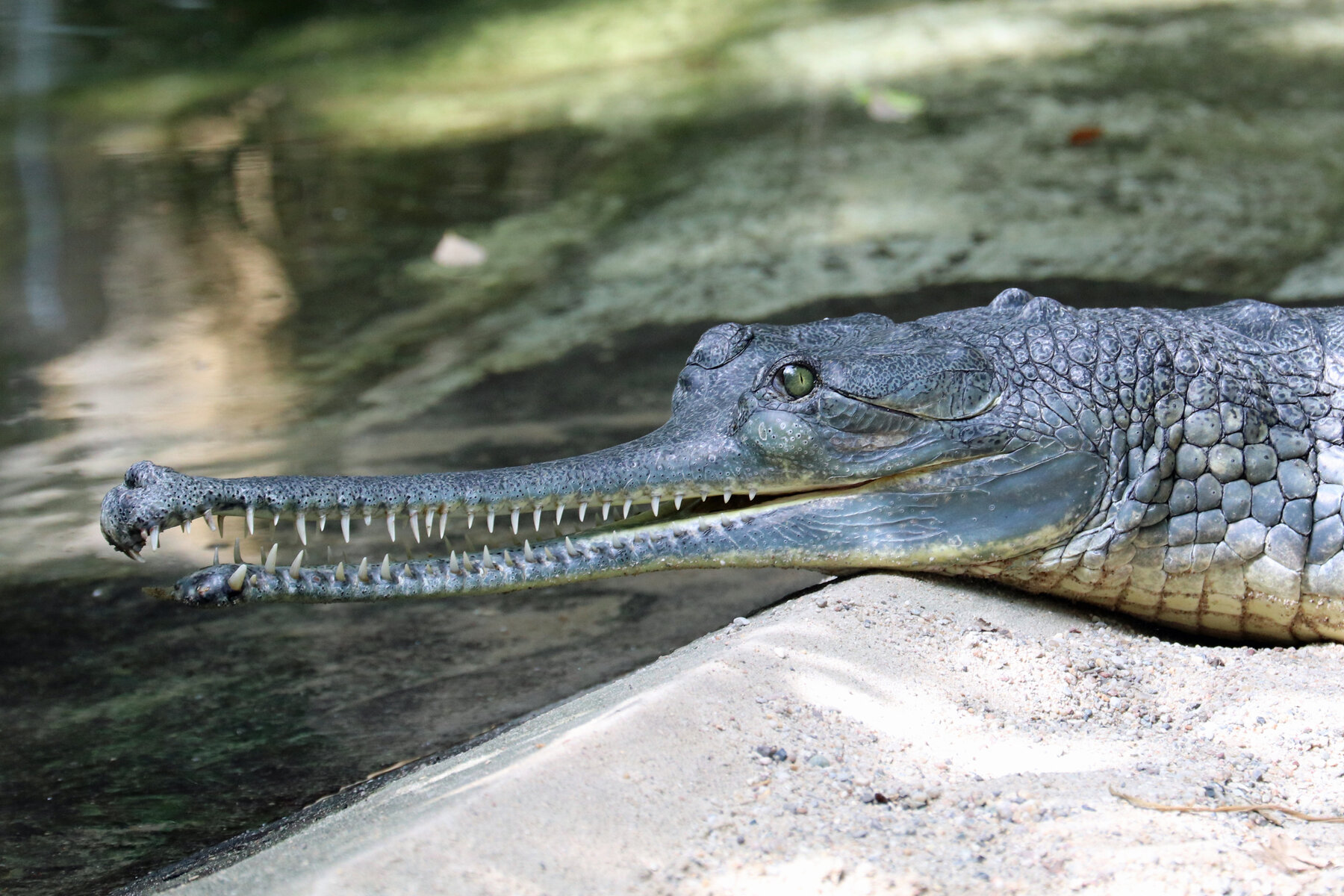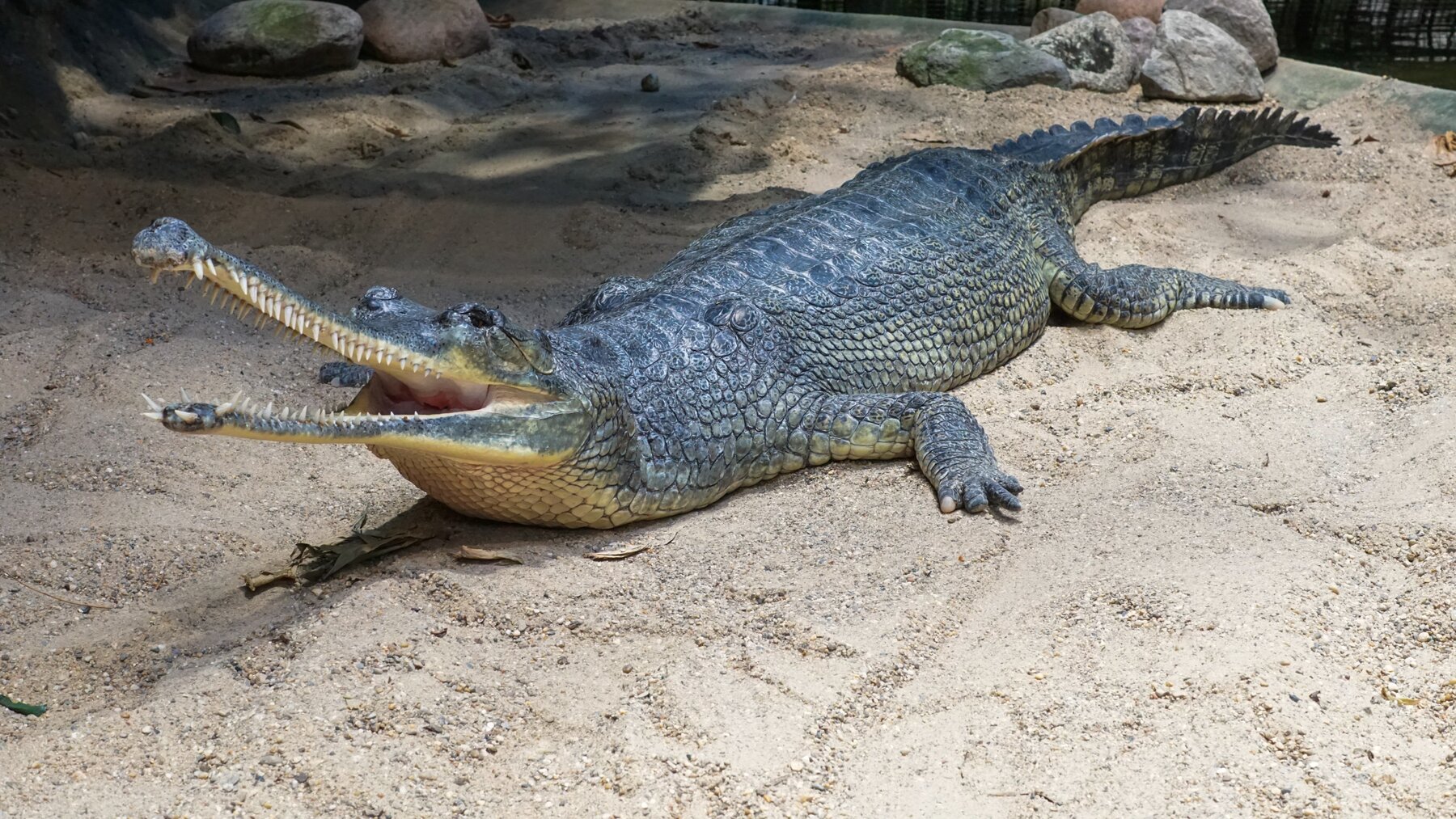
Gharials
Gavialis gangeticus
Gharials belong to the largest group of the crocodile species that survive today with a potential body length of 5 to 7 metres. The gharials live in India and Nepal, where they inhabit the Ganges and its inflows and tributaries.
What you should know about gharials
An unmistakable characteristic of the gharial is its long, narrow snout. Even though in India they are called 'gharial' in many places, this has been Germanised to 'gavial'. It is thought that 'gharial' comes from the Hindi word 'ghara' – as the North Indians call a small clay pot. If you look at an older gharial male with its distinctive nodular and truly clay pot-like structure on the top of the upper jaw, it quickly becomes clear how the species got its name.
Characteristics
- Origin
India, Nepal
- Habitat
slow flowing river sections, kunds (river loops), large streams
- Diet
Fish, but also small amphibians, reptiles and insects.
- Status
critically endangered
- Size
rarely over 5 meters
- Weight
up to 200 kg
- Breeding period
60 to 100 days
- Achievable age
over 50 years
Threat Categories of IUCN


Brood care is left to the females
Gharials prefer deep, fast flowing rivers with vast sandbanks. The loose soil is ideal for the females to dig a hole for their eggs. They always choose a well sunlit place for their nest so that their offspring can grow and thrive in the warm sunlight. Until the young hatch from their eggs, and even for a few weeks after that, they remain under the watchful protection of their mother.
Critically endangered
Illegal hunting, caused by the seemingly boundless interest of people in luxury goods such as leather bags and shoes made from crocodile skin, caused a strong population decline up until the 1960s. Gharials have indeed now since fallen under strict protection, however, their habitat is at risk due to the establishment of dams for energy production since this causes the flooding of all the sandbanks.
Is it true, that …?
... Gharials don't attack humans? Correct. Unlike true crocodiles and alligators, people or larger mammals are not on their menu – they are pure fish-eaters. Their tweezer-like, long snouts are used as a tool when on the prowl to catch fish through lateral sidewards movement of the head.

